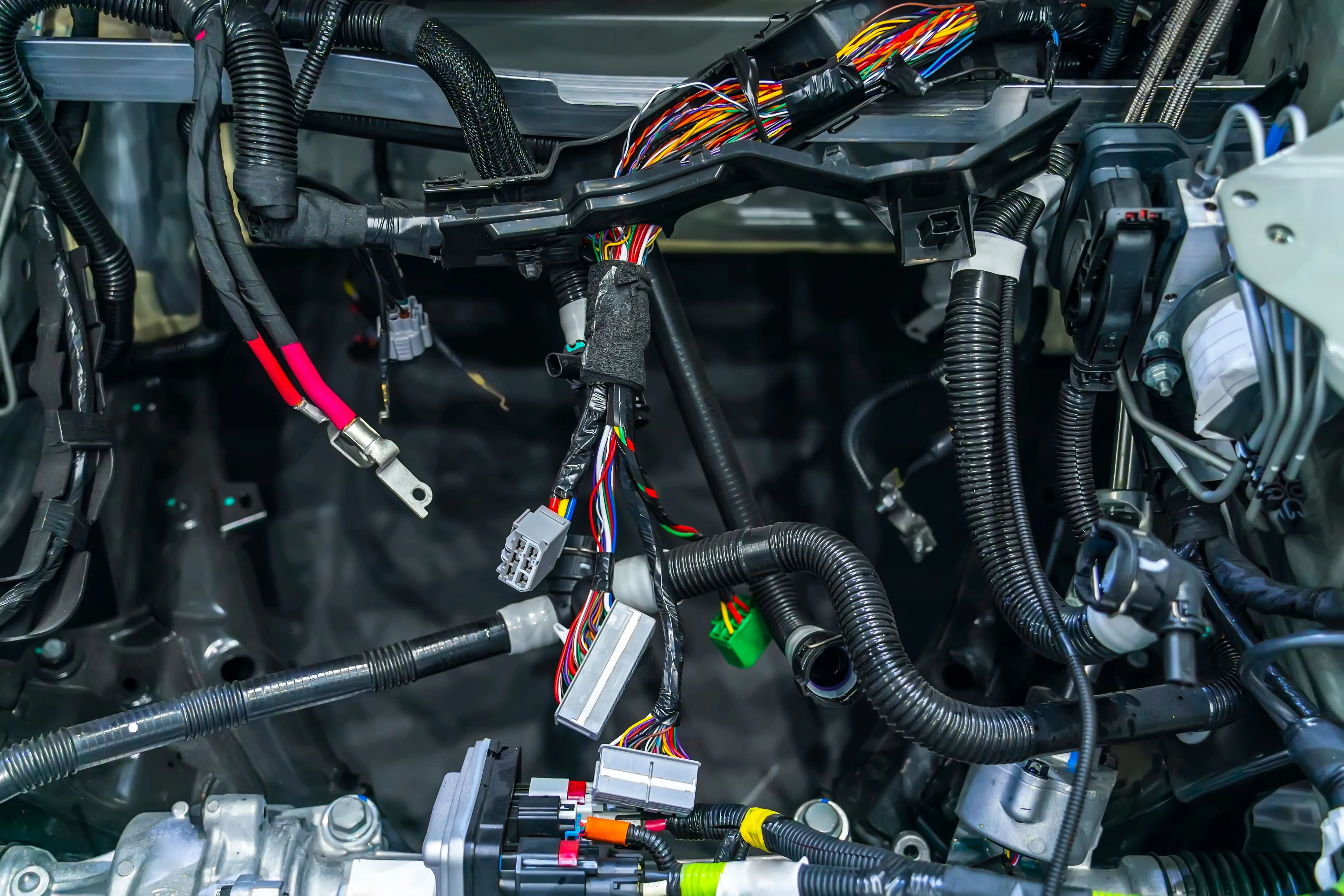Automotive Wire, Electrical Wire and types of Wiring
If you’re looking for the proper automotive wire supplies to tackle your next project, you’ve come to the right place. We offer a large Quantity of quality automotive wire supplies for your every purpose.

Types of Electrical Wires
There is a wide variety of wire and cable products for various applications such as in the automotive-, marine-, commercial-, lawn & garden-, RV-, Trailer-industry, and more, making us the preferred choice for customers.
Cross-link, Primary GPT Wire, Brake Cable, Battery Cable, Marine Grade Wire, Service Cord, Shielded Cable, Trailer Cable and many more make up some of the most used electrical wires in the automotive industry.
Types of Electrical Cables
Some of the most commonly used electrical cables are:
- SGT Battery Cable
- SGX Battery Cable
- SGR Battery Cable
- Marine Battery Cable
- Parallel Battery Cable
- Welding Cable
- EPDM Welding Cable
Having the right parts is crucial when you’re in need of an automotive or electrical wire. We provide a large range of wires and cables such as automotive cross-link wires, battery cables, service cords, and more.
- Automotive Switches
- Electrical Relays
- Wire Connectors
- Automotive Fuses and Fuse holders
Choose the correct automotive wire
To choose the right automotive wire, you first need to know what you want. This is so you can avoid being overwhelmed due to the large amount of available options. So, to get started, read on and discover the five main components that will guide you in selecting the right wire for your project.
Materials
Copper and aluminum are the most commonly used materials for automotive wire. Copper wire is more conductive, flexible, and less prone to corrosion than aluminum wire. However, copper wire is heavier and more susceptible to price fluctuations. To keep costs low, you’ll need to find a good distributor. On the other hand, aluminum wire is cheaper and lighter, but it’s less durable and more likely to corrode or develop more electrical resistance over time.
Amperage
The total amount of electricity that can flow through a wire is called Amperage, or sometimes “Amps”. It is important that The current rating is clearly labeled on every wire that you’re working with, as to avoid overloading a wire, which can be extremely dangerous for anyone working with those wires.
Gauge
Next, you need to be aware of the automotive wire garage. Here goes the rule of thumb: If the wire’s garage number is low, The wire is thicker. This intern means that the longer your wire is, the more electricity needs to flow through it, meaning that your gauge number should be lower. Here are helpful charts that come into play, one for sizing and one for battery cable load, Which helps you determine the correct battery cable for your voltage requirement.
Connections
Soldered and solderless Automotive wires are the two kinds of connections. Solderless connections are most commonly using a terminal such as a crimp terminal to make a connection. Soldered connections can be dangerous as they include hot metal, which calls for caution.
Automotive wire color
The easiest way for you to organize your wires, and therefore make repair and construction easier, is to have different colored wires. Here you can choose between red, black, white, green, blue, yellow, brown, orange, purple and pink.
What is the most typical automotive wire used in most applications?
The two most commonly used wires in automotive applications are cross-link wires and automotive primary wire. If you need wire for under-hood wire and hard to fit areas than general purpose, high temperature automotive wire is ideal for you! This is because of its abrasion resistant design; which is highly resistant to moisture, oil, grease, and other damaging solvents. It means that it works the best with standard automotive connections. Additionally, it is especially adapted for the use in engine compartments due to its heat-resistant requirement by SAE J1128. The polyethylene insulation is being reinforced by cross-link structure, which makes for enhanced durability and resistance against heat and abrasion.
How to use the correct automotive wire
First, you need to choose the correct wire! For this, you need to check on materials, amperage, gold, connections, and the wire color for your specific purpose. Finally, make sure to follow safe practices for soldering and connection methods to ensure a safe and reliable electrical system.
What is the Difference Between Welding Cable and Battery Cable?
The intended purpose of a welding cable is to connect welding equipment and grounds. For the welder not having to drag around stiff and heavy cable while working, welding cables are built for flexibility and high voltage. The benefits of welding cable, high flexibility, high voltage, and its high heat capabilities, have been recognized by various other industries, such as transportation, vehicle, and heavy equipment. These industries often use it as an alternative to battery cable.
For battery management systems, the Battery cables are among the most important cables. It ensures power connection and avoids battery drain. To get the correct sizing for your cable and avoid improper installation due to wire length, it is important that you reference the gauge chart for your cables. Ultimately, taking the time to choose the right wire length and wire gauge for your battery will only benefit you in the long run.
Conclusion
Shop now from our selection of automotive wire, including various types of electrical wire and cables such as cross-link, primary GPT, marine grade, battery, and welding cables. We offer automotive switches, relays, wire connectors, and fuses. To choose the right wire, consider materials, amperage, gauge, connections, and wire color. Make sure to consult a gauge chart for battery cables, to ensure proper sizing and avoid improper installation. Learn about the differences between welding and battery cables and select the right one for your needs.
You want to discuss this topic with us or share any questions with us? Come to our Facebook-Community!



